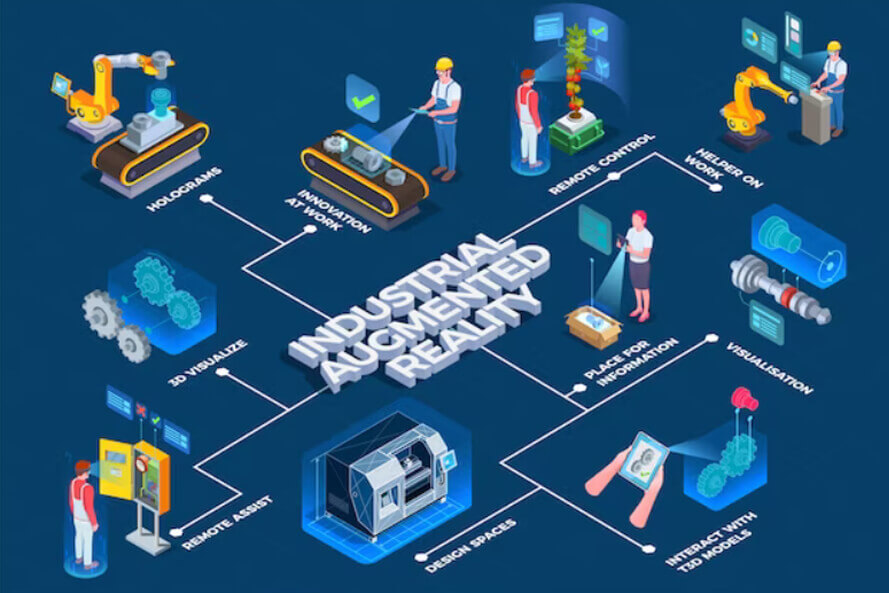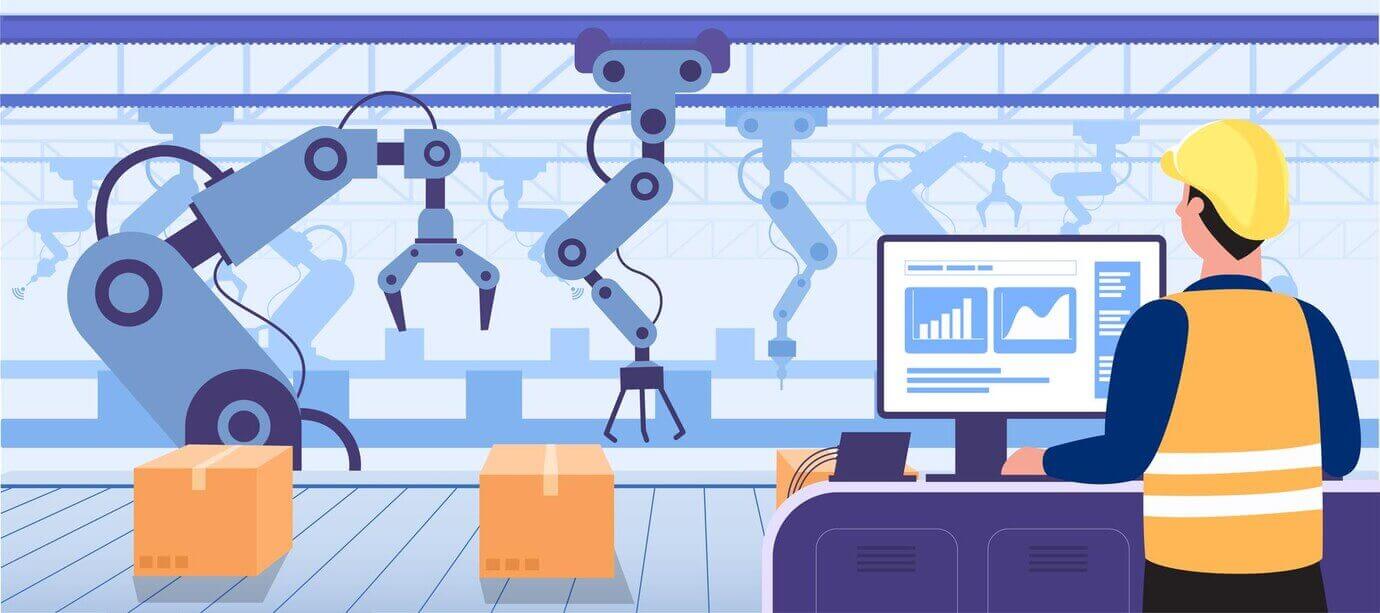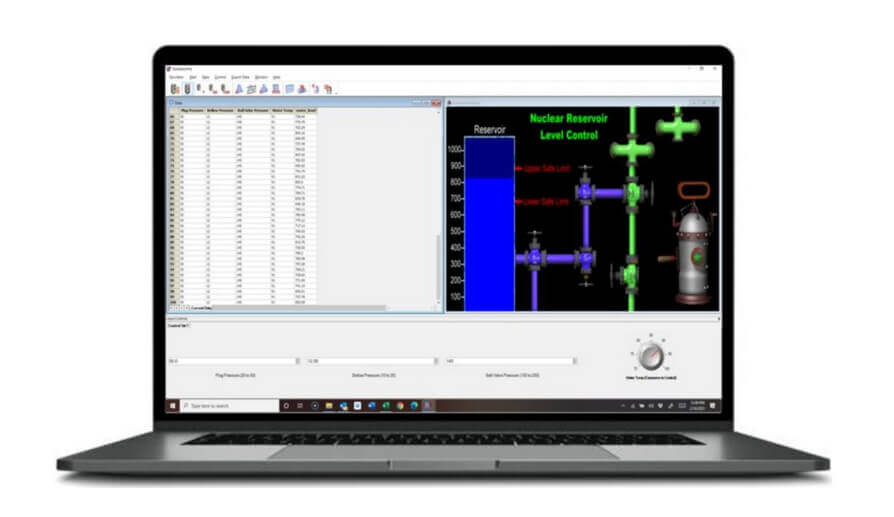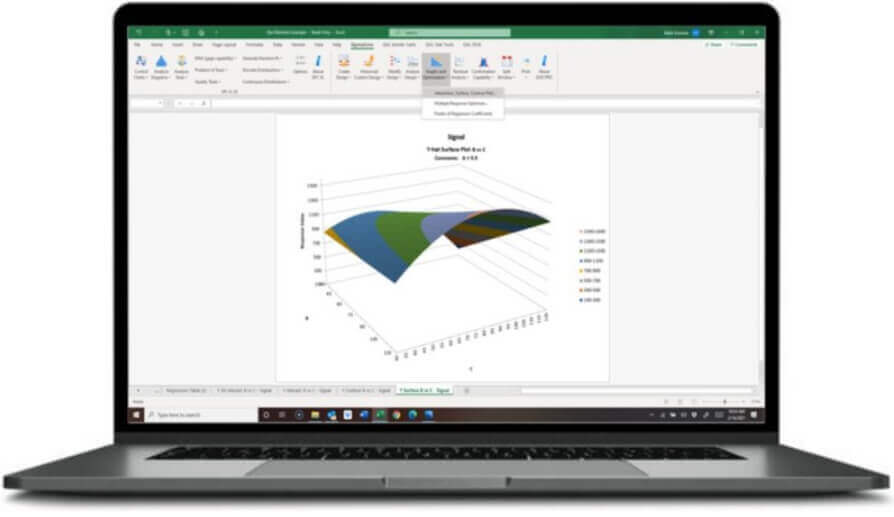
Design of Experiments (DOE) emerges as a critical methodology in this era, offering a structured, systematic approach to determining the relationship between different factors affecting a process and the outcome of that process. It is a vital tool for business leaders and managers aiming to harness the full potential of Industry 4.0, enabling them to make data-driven decisions that optimize performance and drive innovation.
This blog focuses on elucidating the relevance and application of DOE within the context of Industry 4.0. By integrating DOE with the cutting-edge technologies that define this new industrial era, businesses can significantly enhance their process improvement strategies, leading to more efficient, sustainable, and profitable operations.
This discussion aims to comprehensively understand how DOE can be effectively applied in Industry 4.0 settings. We offer practical insights for business leaders and managers leveraging these methodologies for competitive advantage.
Key Takeaways
- Design of Experiments (DOE) is pivotal for optimizing processes and product quality in Industry 4.0, enabling data-driven decision-making.
- Integrating DOE with Industry 4.0 technologies, such as AI, IoT, and big data analytics, amplifies its impact on operational efficiency and innovation.
- Addressing challenges like data complexity, skill gaps, and system integration is crucial for leveraging DOE effectively in Industry 4.0 environments.
- Advanced technologies and tools, including statistical software, simulation software, and cloud computing, are essential for implementing DOE in Industry 4.0.
The Evolution of DOE

Image Source: Freepik
The Design of Experiments (DOE) concept has fundamentally transformed how industries approach problem-solving and process optimization. Originally conceptualized by Ronald A. Fisher in the 1920s, DOE began as a statistical method to improve agricultural yields by analyzing the impact of various factors on crop production. Over time, this method became a cornerstone of quality control and process improvement in manufacturing and other sectors.
The essence of DOE lies in its systematic approach to experimentation, where multiple input variables are manipulated simultaneously to observe their effect on the output. This contrasts with the traditional “Change One Separate factor at a Time” (COST) approach, which, while intuitive, often fails to uncover the interaction effects between variables that are critical to optimizing complex processes.
In the context of Industry 4.0, DOE’s significance is further magnified. Integrating advanced digital technologies with traditional manufacturing processes has introduced a new complexity and dynamism to industrial operations.
Here, the ability to efficiently design experiments and analyze the resulting data can lead to product quality, process efficiency, and energy conservation breakthroughs. DOE techniques are precious in early screening investigations to identify key factors and in robustness testing to ensure product quality before market release.
The transition from traditional industries to Industry 4.0 represents a leap in the complexity and capabilities of manufacturing systems. In this new era, the application of DOE is beneficial and essential for navigating the multifaceted interactions between process variables and achieving optimized outcomes.
| Timeline | Event Description | |
| Origin of DOE | Originated by Ronald A. Fisher in the 1920s as a statistical method for agricultural improvement. Initially used to analyze the impact of various factors on crop production. | |
| Evolution of DOE | Evolved from a simple agricultural tool to a cornerstone of quality control and process optimization across manufacturing and other sectors. The method’s systematic approach allows the simultaneous manipulation of multiple variables to observe effects on outputs, contrasting with the traditional ‘Change One Separate factor at a Time’ (COST) approach. | |
| DOE & Industry 4.0 | With the advent of Industry 4.0, DOE’s significance has been magnified due to the integrating of advanced digital technologies with traditional manufacturing processes. This integration introduces new complexities, where DOE helps efficiently design experiments and analyze data for product quality, process efficiency, and energy conservation. | |
| Applications of DOE | Valuable in early screening investigations to identify key factors and in robustness testing to ensure product quality before market release. DOE techniques enable breakthroughs in product quality, process efficiency, and energy conservation. | |
| Benefits in Industry 4.0 | Essential for navigating the complex interactions between process variables in Industry 4.0, leading to optimized outcomes. By leveraging DOE, businesses can enhance operational efficiency, reduce waste, and improve product quality, aligning with sustainable and intelligent manufacturing principles. | |
Design of Experiments in Industry 4.0
Integrating the Design of Experiments (DOE) into Industry 4.0 signifies a pivotal evolution in how businesses approach process improvement and innovation. This integration is about implementing new technologies and leveraging systematic methodologies to optimize these technological advancements.

Image Source: Freepik
In Industry 4.0, where digitalization, automation, and data analytics converge, DOE provides a structured framework for exploring the potential of these technologies to enhance operational efficiencies, product quality, and overall business performance.
Key Principles and Application
DOE in Industry 4.0 is underpinned by several key principles, including the systematic variation of input variables to observe their effect on output variables, statistical methods to analyze experiment results, and the emphasis on understanding the interaction effects between variables. This approach allows businesses to identify the most influential factors in their processes and products, enabling more targeted and effective optimization strategies.
The application of DOE in Industry 4.0 is multifaceted. It ranges from optimizing manufacturing processes, such as reducing waste or energy consumption, to enhancing product design and quality.
For instance, by using DOE, companies can quickly identify which combination of materials and process parameters yield the best product quality or which operational settings minimize energy use while maximizing output.
Integration with Digital Technologies
One of the hallmarks of Industry 4.0 is its reliance on digital technologies, such as Internet of Things (IoT) devices, artificial intelligence (AI), and big data analytics. DOE plays a critical role in maximizing the value of these technologies.
For example, IoT devices can collect vast amounts of data from manufacturing processes, which can then be analyzed using DOE to identify patterns and relationships that would not be apparent otherwise.
Similarly, AI and machine learning models can be trained more effectively with data generated from well-designed experiments. This ensures that the models have a robust understanding of the process dynamics, leading to more accurate predictions and better decision-making.
Additionally, the insights gained from DOE can inform the development of digital twins, virtual replicas of physical systems that can be used for simulation and optimization.
The role of DOE in Industry 4.0 is both transformative and foundational. It systematically explores and optimizes the complex interactions between various factors in modern manufacturing and business processes.
Challenges and Solutions in Implementing DOE in Industry 4.0

Image Source: Freepik
Integrating the Design of Experiments (DOE) into the Industry 4.0 framework presents a unique set of challenges. However, with every challenge comes a solution. This section discusses common obstacles businesses face when implementing DOE in Industry 4.0 environments and outlines strategies to overcome them.
Challenge 1: Data Complexity and Volume
Solution: Big data technologies have made handling large volumes of data easier. Advanced analytics and machine learning algorithms can process and analyze the data generated from experiments, extracting meaningful insights. Employing these technologies can simplify the complexity and manage the sheer volume of data.
Challenge 2: Integration with Existing Systems
Solution: Integrating DOE methodologies with existing digital infrastructure can be daunting. The solution is leveraging middleware and integration platforms that facilitate seamless communication between systems and technologies. Adopting a modular approach to system design can also enhance flexibility and ease integration efforts.
Challenge 3: Skill Gaps
Solution: Successfully applying DOE in Industry 4.0 requires expertise in methodology and the relevant technologies. Organizations can address this challenge through targeted training programs and workshops for their staff. Collaborating with academic institutions and specialized consultants can also bridge the skill gap.
Challenge 4: Ensuring Data Security and Privacy
Solution: With the increased reliance on data, protecting sensitive information becomes paramount. Implementing robust cybersecurity measures and adhering to data protection regulations can safeguard against breaches. Regular audits and updates to the security infrastructure can further enhance data security.
Challenge 5: Cultural Resistance to Change
Solution: Cultural resistance can hinder the adoption of DOE in Industry 4.0. Overcoming this requires a change management strategy that emphasizes the benefits of DOE and actively involves employees in the transition process. Clear communication, training, and involvement in decision-making can facilitate cultural acceptance.
Challenge 6: Cost of Implementation
Solution: The initial cost of implementing DOE can be high due to the need for technology upgrades and training. However, focusing on the long-term ROI can justify these expenses.
Additionally, phased implementation and leveraging open-source tools and platforms can reduce upfront costs.
Implementing DOE in Industry 4.0 is not without its challenges. However, businesses can overcome these obstacles with careful planning, strategic investment in technology and skills development, and a focus on data security. The key is to view these challenges not as roadblocks but as opportunities to innovate and improve.
Technology and Tools for DOE in Industry 4.0

Image Source: Freepik
The successful implementation of Design of Experiments (DOE) in the Industry 4.0 era is greatly facilitated by various technologies and tools. These resources not only streamline the process of conducting experiments but also enhance the analysis and interpretation of data, enabling businesses to make more informed decisions. This section explores the key technologies and tools for applying DOE in Industry 4.0 environments.
Data Analytics and AI
Data Analytics Platforms: Advanced data analytics platforms play a crucial role in processing and analyzing the vast amounts of data generated from DOE. These platforms can handle complex data sets, uncovering patterns and insights that would be difficult to detect manually.
Artificial Intelligence (AI) and Machine Learning (ML): AI and ML algorithms can predict outcomes based on experimental data, optimize experiment designs, and even automate the selection of factors to be tested. These technologies enhance the efficiency and effectiveness of DOE by learning from data to make predictions or decisions without being explicitly programmed to perform the task.
Simulation Software
Digital Twins: Digital twins create virtual replicas of physical systems, which can be used to simulate experiments in a virtual environment. This allows for exploring a more comprehensive range of conditions and scenarios than feasible in the real world, reducing the time and cost associated with physical experiments.

Utilize Air Academy’s Simware Pro, a cutting-edge tool for creating digital twins and simulating complex systems. This enables exhaustive scenario exploration without physical trials’ high costs and time constraints.
Process Simulation Tools: Simulation tools specific to manufacturing processes or product designs enable companies to model experiments before physical trials. These tools can help identify optimal conditions and potential issues in a risk-free environment.
Air Academy’s Quantum XL software integrates with standard spreadsheet applications to provide powerful simulation capabilities, making it easier for companies to model and optimize manufacturing processes and product designs before real-world implementation.
Statistical Software
DOE Software: Specialized software packages for DOE simplify the design, execution, and analysis of experiments. These tools offer user-friendly interfaces and sophisticated statistical capabilities, including analyzing complex factorial designs and identifying interactions between variables.

DOE Pro XL from Air Academy simplifies experimental design, execution, and analysis, offering a user-friendly interface and advanced statistical analysis features. This tool is specifically tailored to enhance the efficiency and effectiveness of DOE in Industry 4.0 applications.
Big Data Tools: Tools and platforms designed to work with big data are essential for managing the scale of data typically involved in Industry 4.0 experiments. They can process and analyze large data sets quickly and efficiently, providing timely insights.
Quantum XL supports big data analysis, which is crucial for managing the scale of data typically involved in Industry 4.0 experiments. It enables quick and efficient processing and analysis of large data sets for actionable insights.
Cloud Computing
Cloud computing allows for scalable storage and computing power, facilitating the handling of large-scale experiments and data analysis. Cloud platforms enable collaborative DOE projects across different locations, enhancing flexibility and accessibility.
IoT Devices
Internet of Things (IoT) devices, including sensors and actuators, are integral to collecting real-time data from experiments. These devices can monitor various variables, from temperature and pressure to more complex conditions, ensuring accurate and comprehensive data collection.
The landscape of tools and technologies for implementing DOE in Industry 4.0 is rich and diverse. Whether it’s through advanced data analytics, simulation software, statistical tools, cloud computing, or IoT devices, the right combination of technologies can significantly amplify the benefits of DOE in driving innovation and process improvement in the Industry 4.0 context.
Conclusion
In the era of Industry 4.0, the strategic application of Design of Experiments (DOE) stands as a critical enabler for businesses seeking to navigate the complexities of modern manufacturing and process improvement. This synergy optimizes existing processes and paves the way for discoveries and advancements.
As businesses continue to evolve within this digital industrial revolution, the adoption and integration of DOE will undoubtedly play a pivotal role in shaping competitive advantages and driving sustainable growth. The journey through DOE in Industry 4.0 is not just about technological integration but a testament to the transformative power of systematic experimentation and data-driven decision-making in the quest for operational excellence.
Deepen your Design of Experiments (DOE) knowledge with Air Academy Associates’ Operational Design of Experiments Course. This program will enhance your skills in applying DOE methods within Industry 4.0 settings, ensuring you can lead your organization toward greater efficiency and innovation. Begin your journey to mastering DOE by enrolling today:


